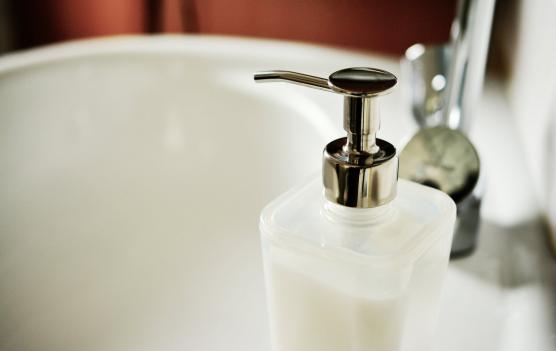The new pandemic has forced the whole world to update daily hygiene standards. If earlier it was believed that washing hands with soap and water is enough, now we know that it's important to know how to properly do that. The best solution is to use special soap dispensers, especially in public places with high traffic. It is very important that no one personally touches such devices. In sensor devices, the skin surface is processed at a distance of about 10-15 cm from the device.
There are two main types of dispensers - manual and touch-sensitive. In the first case, to squeeze out a portion of soap, you need to press the button connected to the piston. Whereas automatic dispensers do not require pressing, since they are based on a completely different principle of operation. Let's take a closer look at how they function, the existing varieties, and all the benefits of using them.
How The Automatic Soap Dispenser Works
The non-contact soap dispenser is the most modern and high-tech type of soap dispenser. The dispensing of a portion of liquid occurs without direct human exposure to the device. The device is triggered by the presence of electronic sensors that respond to the appearance of a hand in its area of action.
Structurally, electronic dispensers consist of several parts:
Soap container.
Occupies most of the internal volume of the dispenser. The most common are devices with a capacity of 0.2-0.3 liters. However, there are dispensers that can hold only 30-50 milliliters of liquid, or up to a liter or more. The bigger modifications are intended for public toilets located in buildings with a large number of people - educational institutions, airports, train stations, shopping centers. For home usage, containers with a volume of 150-250 ml are ideal.
Rechargeable battery or disposable batteries.
The operation of sensor devices is provided by electrical mechanisms, therefore, with discharged batteries or dead batteries, the electronic dispenser will not function.
Infrared sensor.
The sensor reacts to the appearance of a palm between its two elements - emitting the beam and receiving it.
An electronic controller.
It receives a signal from the IR sensor and transmits a command for dispensing liquid.
A dispensing device.
It squeezes out a certain portion of liquid soap onto an exposed palm.
Additional functional devices.
For different modifications, this can be an indicator light, a sound signal that warns of the dispensing of a portion of soap, and so on.
When a hand is detected, the sensor sends a signal to the electronic controller. That, in turn, sends a command to the metering device, which is a piston with an electric drive. When the contacts are closed, the piston starts to move, dispensing a portion of the washing liquid from the container.
Benefits
The touch-sensitive soap dispenser has a number of advantages over mechanical ones:
Easier to use.
There is no need to press any buttons. You just need to bring your palm to the dispensing device, and a certain portion of liquid soap will be squeezed out onto it.
Hygiene.
When you press the button of the mechanical dispenser, various pathogenic microorganisms inevitably remain on it. Therefore, there is a possibility of transmission of pathogens from person to person when using a push-button dispenser. Automatic devices do not have this drawback.
Possibility of adjusting the supply of detergent.
Most modern devices provide the ability to adjust the dispensed volume of soap from 1 to 3 milligrams at a time.
Cleanliness of the device.
Since the person does not touch the device before washing his hands, it becomes less dirty and requires less cleaning.
Additional functions
Additional functions of indicator light or sound signals make the use of smart dispensers more comfortable.
Types Of Liquid Soap Dispensers
There are several types of liquid soap dispensers. Subdivisions into types can be made according to various criteria:
Installation method.
The touch-sensitive soap dispenser can be installed permanently, mounted on the wall. But there are also portable models. They are placed in any convenient place - on the washbasin, kitchen countertop, and so on. Some models of devices are made in a combined version: they can be placed on any flat surface, but at the same time they have mounts for hanging on the wall.
Purpose.
The devices can be intended for use in public places with high traffic of people - commercial soap dispensers, or smaller ones for family use. The differences between them are in the size of the container for liquid soap. If a volume of 150-250 ml is sufficient for a bathroom in an apartment, then dispensers containing up to 1-2 liters of detergent are better suited for a public restroom.
Manufacturing material.
The main material for making dispensers is plastic, metal or ceramic. Models from the lower price segment usually have a polymer case. They are less durable but have an affordable cost. The most resistant to external influences are metal dispensers. While the ceramic varieties have an attractive design that can successfully fit into the interior of the bathroom.
Refueling method.
The easiest way to pour liquid soap is into the inner container through the neck of the lid. There are also commercially available models that do not have a built-in capacity. Instead, disposable cartridges are inserted inside them, made in the form of plastic bottles already filled with a detergent composition.
Liquid supply.
There are three types of dispensers, classified according to the type of liquid supply: jet, foam, and spray. In the first case, the detergent composition is poured directly into the hands of the extended stream. Spray models spray soap all over the palm. Foams give out the already whipped soap composition ready for use.
Conclusion
Hygiene plays a huge role in the life of a modern person. Caring for ordinary soap dishes requires a lot of attention from the owner and takes a significant amount of time, so convenient dispensers have replaced such products. They are easy to care for and have a beautiful, stylish appearance. Modern manufacturers offer many models of such devices, designed to meet the needs of different consumers.
















